QNAP TS-464 or the Synology DS920+ NAS Drive – Which Should You Buy?
Choosing Between the Synology DS920+ and QNAP TS-464 NAS is more than just about how you are spending your money at checkout! Making the move away from 3rd public cloud storage can be a big, BIG decision for some users. The ‘freemium’ and low cost monthly subscription to the likes of Google Drive and DropBox seems like a drop in the ocean, right up until you realise that over the years you have spent hundreds of pounds and you face the fact that you are going to need to consider moving that data onto something more long term and ‘in house’. For many users, this is their first encounter with two of the bigger brands in the world of NAS, Synology and QNAP and although at a glance they seem t provide the same kind of solution, even a brief second glance reveals that these two brands have very, very different ideas of where you should be spending your money. Synology is the sleek, apple-esc presented solution that promises a smooth and uncomplex experience, with an arguably more rigid and fixed architecture. Whereas QNAP is the more customizable and flexible in its hardware and software, but has a slightly higher learning curve and requires more time to configure perfectly. Both brands provide an excellent range of NAS solutions with each of the solutions in today’s comparison being quite similar in price, but what you are getting for your money, the range of software included, the scope of hardware that is available and how they translate to upgradable and scalability is incredibly different! So, today we are going to compare the Synology DS920+ NAS released in 2020 (but still a firm favourite now) against the newly released QNAP TS-464 NAS.
Synology DS920+ vs QNAP TS-464 NAS – Design
The design of the QNAP TS-464 and Synology DS920+ are both very uniform to the brands, utilizing existing designs in their respective Home/Prosumer/SMB ranges. Both are 4-Bay desktop solutions that are designed to be deployed easily and pretty much anywhere. They are largely the same in physical volume, with the Synology DS920+ arriving the tiniest pinch larger, but both systems provide a similar level of storage on their four SATA and 2x NVMe M.2 SSD bays. The Synology has the more traditional shape of the lockable storage media bays being immediately visible, but finish this with an incredibly modernistic shape and matt surface design. The front of the system features a single USB backup port, as well as 5 LEDs for system/drive activity and those two M.2 SSD bays are located on the base of the system. The QNAP TS-464 NAS uses a more glossy and slightly coloured design by comparison (featuring a copper side panel), with the 4 drive bays of the system being covered by a slidable and lockable semi-translucent panel. The QNAP also featured the same LED/USB present, but there are more LEDs on the QNAP and the USB here is both a USB 3.2 Gen 2 Port (10Gb/s) and is accompanied by a one-touch copy button. This is one of the early examples of how things in the NAS market have moved forward in the 2 years between these two being released and won’t be the last. The QNAP TS-464 is certainly the more expensive NAS of the two, with the DS920+ being in the market longer and with a greater degree of price flexibility in 2022, but the hardware yo uare getting for that price tag is notably different and will become a clear divide between these two. Because of the compact design, both systems need to factor in intelligent cooling, as they will likely be in operation 24×7. This is another clear area where the brands have gone in different directions here.
| QNAP TS-464 NAS
168mm × 170mm × 226 mm |
Synology DS920+ NAS
166 mm x 199 mm x 223 mm |
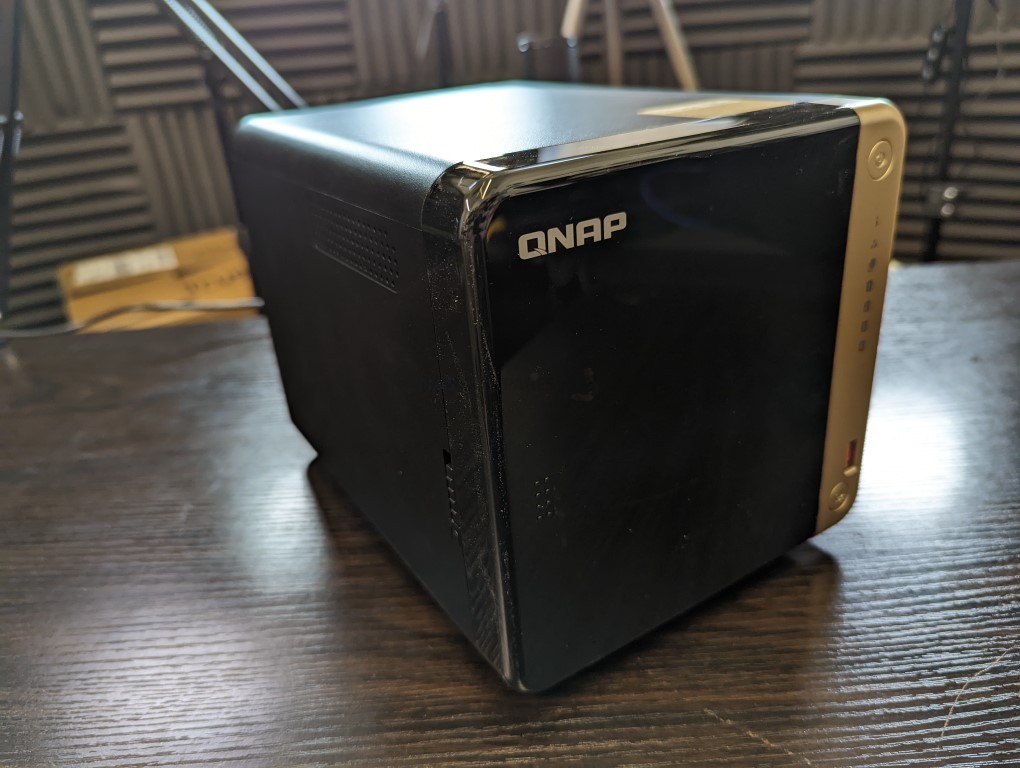 |
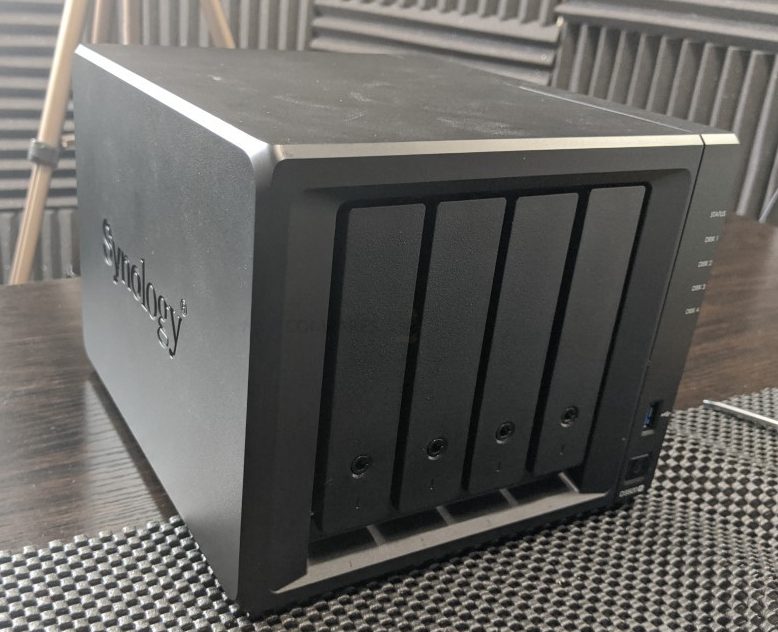 |
The ventilation on the Synology DS920+ is certainly more visible but in a much more ‘branded’ and slick way. The QNAP TS-464 features no front-facing ventilation, instead using two small areas of ventilation on the sides of the chassis and the base of the TS-464 featuring further ventilation under each of the storage bays. The Synology on the other hand has much more passive airflow, with each of the individual storage bays being surrounded by a slit of ventilation and the side panel of the DS920+ having the Synology logo featured as further ventilation. Higher-end Synology desktop models feature metal mesh panels inside these logos to capture dust, but this is less of a concern in the more compact and discreet DS920+. Overall, I would certainly say that the Synology DS920+ have more visible efforts to maintain system temperature than the QNAP TS-464 (which is a real surprise when you see how the hardware these two systems are sporting compares) but both maintain a good operation temperature.
| QNAP TS-464 NAS | Synology DS920+ NAS |
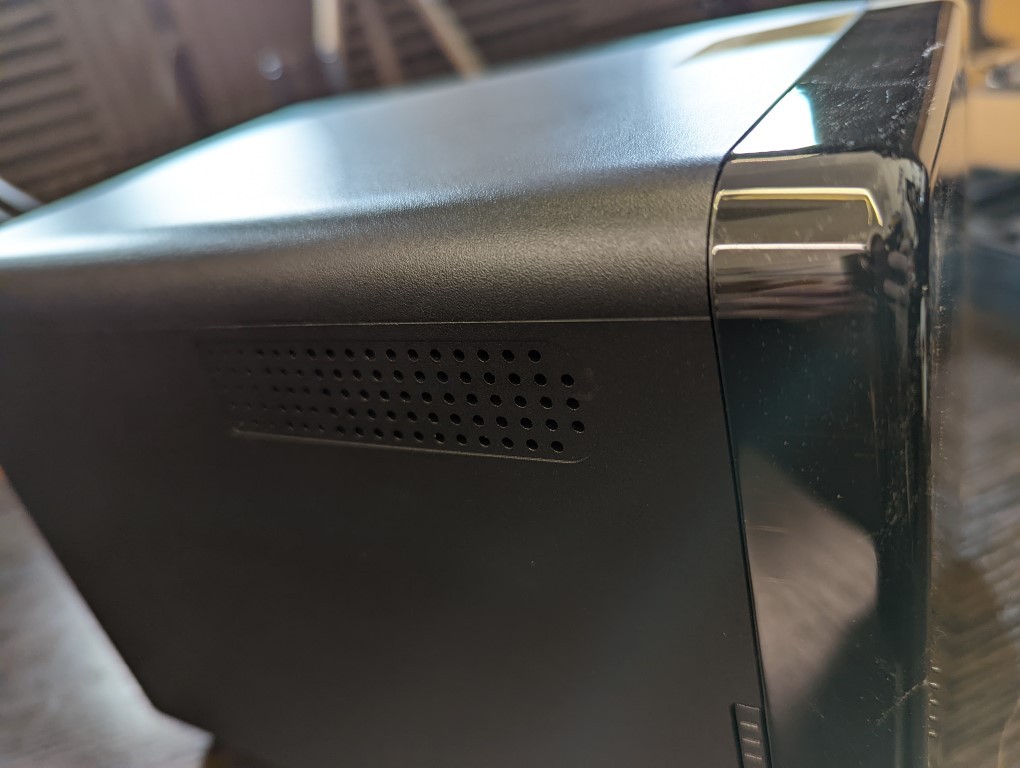 |
 |
When you look at the rear of the TS-464 and DS920+ NAS, you see another big difference in how each system maintains their respective internal temperatures, with the QNAP featuring a single 120mm fan that covers the bulk of the internal hardware airflow path and the Synology featuring two 92mm fans that cover around 70% of the rear of the chassis. Of the two, I would say the QNAP TS-464 is the noisier in operation of the two (when populated with 4x 4TB WD Red HDDs) by the tiniest of margins, but it isn’t really till you entertain the idea of enterprise HDDs or drives larger than 10TB that you need to worry about ambient sound around these two systems. Both the DS920+ and TS-464 can have the rotations per minute (RPM) of their fans changed manually or left oN automatic as the system changes the internal cooling to ensure maximum efficiency.
| QNAP TS-464 NAS | Synology DS920+ NAS |
 |
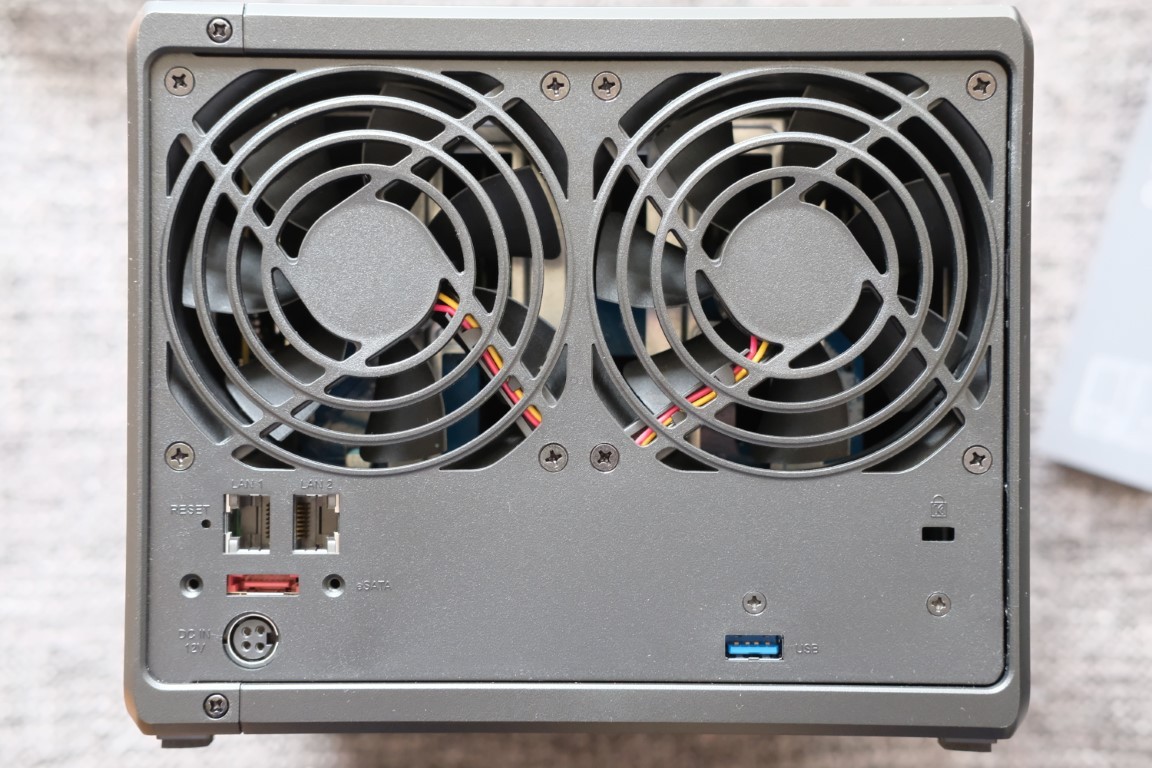 |
Overall, the design of the Synology DS920+ is still the better-looking system of the two and although I personally really like the copper and glossy look of the QNAP TS-464 NAS, I know that the bulk of users will want to ‘set up and forget’ their NAS, so these aesthetic design choices are less important to them. Equally, although the QNAP fan has the potential to cool its respective system much more, I think the Synology features a better balance of active airflow and passive ventilation overall. The QNAP still wins pretty big on its inclusion of a USB 3.2 Gen 2 One Touch Copy button enabled port for faster and more manual backup options (as well as still allow automated and connection-triggered backups as the Synology), but overall on points, this round belongs to the Synology DS920+ NAS.
QNAP TS-464 versus Synology DS920+ NAS – Internal Hardware
This is an area where you really see how both brands focus their priorities on the solutions they offer, as well as how the components common to NAS have evolved in the 2 years between their respective releases. The Synology DS920+ arrives with a familiar architecture to it’s predecessor and is a fairly tried and tested formula by the brand. Synology was the first company to introduce NVMe SSD storage bays into desktop NAS systems around 4 years ago (something that QNAP has only really been catching up on in the last year and a half). Likewise, Synology has made a few very brand-specific decisions in their system architecture that this rather more proprietary brand is often keen to implement. For example, the default DDR4 memory inside (2666Mhz SODIMM) is actually soldered to the main internal board (4x 1GB Modules), with an additional empty memory slot to allow an additional 4GB Synology-branded memory module. As the DS920+ have a CPU that has a maximum 8GB of memory, this is not really any barrier or issue, but still, an odd move that is perhaps done out of system PCI/Bandwidth, rather than any kind of restriction. The QNAP features a newer gen CPU (as you would expect after the later release) and this CPU allows up to 16GB of memory (4GB in the default model) across two upgradable slots. Likewise, returning to those M.2 NVMe slots, both system feature 2 bays that can be used for SSD storage upgrades, although both the DS920+ and TS-464 support SSD caching (when a pool of SSDs is used to speed up data write/read in conjunction with the larger HDD RAID array), the QNAP is the only one that also allows this to be used as a standalone storage pool and volumes. This is the first of several key differences between the QNAP TS-464 and Synology DS920+ NAS that show the divide in hardware between these units.
| Model | QNAP TS-464
|
Synology DS920+
|
| Price | £559 $650 €675 | £508 $549 €569 |
| Storage Media Support | 4x SATA, 2x m.2 NVMe 3×1 | 4x SATA, 2x NVMe SSD Cache Bays |
| CPU Model | Intel N5105/N5095 | Intel J4125 |
| CPU Frequency & Cores | Quad-Core 2.0-2.9Ghz | Quad-Core 2.0-2.7Ghz |
| CPU Benchmark Score | CPU benchmark 4161 | CPU benchmark 3006 |
| Memory Default/Max | 4-16GB SODIMM DDR4 | 4-8GB SODIMM DDR4 (4GB onboard) |
| PSU Power & Design | 90W External PSU | 100W External PSU |
| Physical Fans | 1x 120m FAN | 2x 92m FAN |
Of course, the clearest difference that most PC builder minded people are going to notice is the CPU. NAS systems are designed to be operational for days, weeks, months and even years at a time. Therefore, in order to maintain optimal performance, as well as lower power consumption and lessen the damage that long term operation can inflict on a processor, the CPUs used in NAS are a great deal more modest. In the case of the Synology DS920+ and QNAP TS-464 NAS, they feature Intel Celeron processors, each featuring an embedded graphics component (allowing graphical operations, multimedia handling and visual data to be handled by a specialized area of the processor), quad-core architecture and a base level clock speed of 2.0Ghz that can be burst (turbo/increased when needed). However, the newer generation N5105/N5095 CPU in the QNAP is able to reach a higher overall clock speed and also is more efficient (i.e uses a little less hardware resources to get a task done than it would take on the J4125 typically, so, therefore, can do more tasks overall when the full CPU power is utilized). Indeed, CPUBenchmark rated the newer CPU 30%+ higher in it’s scoring than the J4125 (again, as you would expect for a CPU released more than a year later by Intel), so this processor means that more can be done on the QNAP (in like for like tasks) and also this CPU allows a greater range of hardware to be built into the system. CPUs are one of the largest quantifying factors of how a NAS is built and this is because they can only handle a certain amount of connected hardware (storage bays, ports, expansion slots, etc) when connected to a larger controller/mother board. This is commonly referred to as the # of PCI lanes and the chipset used in the build of the system. Because this newer Intel N5105 / N5095 CPU has more lanes to use at once than the J4125, it allows the newer NAS drive to have more hardware.
|
QNAP TS-464 NAS – Intel N5105/N5095 CPU
|
Synology DS920+ NAS – Intel J4125 CPU
|
These additional CPU resources, as well as the increased maximum memory and flexibility of how the M.2 NVMe SSD slots can be used ultimately mean that in terms of internal hardware, the newer released QNAP TS-464 wins over the Synology DS920+ NAS. It is worth remembering that the M.2 NVMe SSD slots on the QNAP TS-464 are PCIe Gen 3 x1 (down to the Celeron CPU still not having anywhere near the scope in it’s flexibility that the likes of an Intel Core, Ryzen or Xeon might have) and will bottleneck at 1,000MB/s, but this is still better than nothing and as these slots are still only used for caching in the DS920+ (with the likelihood that these slots are PCIe 2×4, 3×1 or 3×2 at the most), the QNAP still seems to have a better balance of NVMe SSD support in it’s architecture overall.
Synology DS920+ or QNAP TS-464 NAS – Ports & Connections
Now ports and connections on the Synology DS920+ and QNAP TS-464 NAS is an area that is INCREDIBLY diverse in it’s approach by either brand. Once again, the reasons are clearly to do with that CPU revision being so different in the two years between either system being released, but also the brand’s own decisions in build architecture/priorities still massively continues to be a contributing factor here. The Synology DS920+ NAS certainly comes across as the weaker of the two here in its connectivity and although a lot of the QNAP’s advancements in connectivity could be described as ‘future upgrades and simply facilitating extras or addons’, it still manages to provide a greater deal of connectivity to the day 1 user than the Synology system here. The port(s) that almost certainly will be the one that jumps out immediately on each system is the network connections. The DS920+ NAS arrives with 2x 1GbE ports which, although allowing link aggregation to create 2GbE with a smart switch, was still a little underwhelming even in 2022 (as we had already started seeing 2.5GbE arriving at the same price as 1GbE with a number of client hardware devices). The newer QNAP TS-464 features 2x 2.5GbE (so 5GbE via link aggregation and a supported switch) which now that some ISPs and budget switch manufacturers are providing affordable 2.5GbE solutions, will be incredibly useful. Then the is the additional PCIe upgrade slot on the QNAP NAS that allows upgrades towards 10GbE, dual-port 10GbE cards and even combo cards to add 10G and further M.2 NVMe bays via a single card. Again, there ARE upgrades and not something in the baseline model, but you can not argue with the future-proofing available here. Perhaps the next generation of the Synology 4-Bay series (a DS922+ or DS923+) will address this and add 2.5GbE, 10GbE or the option to add PCIe cards (Synology will always want to factor if the available SATA storage has the potential to even saturate that level of bandwidth to start with), but in the 2020 released DS920+, those 1GbE ports are something of a limiting factor.
| Model | QNAP TS-464
|
Synology DS920+
|
| Network Ports | 2x 2.5GbE | 2x 1GbE |
| USB 3.2 Ports | 2x USB 3.2 Gen 2 (10Gb) | 2x USB 3.2 Gen 1 (5Gb) |
| USB 2.0 Ports | 2x USB 2.0 | 1x eSATA Expansion Port |
| HDMI Ports | 1x HDMI 2.0 4K 60FPS | n/a |
| PCIe Upgrade Slots | PCIe Gen 3×2 Slot (2Gb/s) | n/a |
After the network and PCIe differences that favour the TS-464, the distance between the 2020 and 2022 NAS here is further extended. The Synology DS920+ features a further USB 3.2 Gen 1 (5Gb/s) port and an eSATA expansion port that allows you to add an additional 5 Bays of storage by utilizing the DX517 official expansion. QNAP counters this on the TS-464 with the inclusion of another USB 3.2 Gen 2 (10Gb/s) port, as well as some (obviously less useful) USB 2.0 ports. These USB 2.0 Ports are primarily designed to be used in conjunction with the optional visual output (HDMI 2.0 4k 60FPS) on the QNAP as a KVM (Keyboard, video and mouse) setup with the included parallel HD Station application and its tool. The HDMI and direct interface of the QNAP is still pretty niche as a service on this system, but it has a number of useful multimedia, surveillance and VM utilities that can be quite impressive. Expansions on the TS-464 are more diverse than the 5-Bay DX517 on the DS920+, with QNAP offering 2, 4, 6, 8 and 12-Bay expansion chassis (arriving in JBOD or hardware RAID enabled) that connect over USB or an inclusive PCIe card. Overall, it comes as no surprise that in terms of hardware, the QNAP TS-464 still takes the first place, as the Synology DS920+ (like most of the brand’s solutions) is prioritizes the DSM platform and it’s tools/services over the hardware. Let’s discuss the software on each of these brands.
QNAP TS-464 or the Synology DS920+ NAS – Software
When you are choosing to buy a Synology or QNAP NAS, it is always worth bearing in mind that you are not just buying a bunch of hardware, but you are actually getting a fully-featured software solution. Both the Synology DS920+ and QNAP TS-464 arrive with each brand’s premium NAS software and services platform, DSM and QTS respectively. Both of these platforms include a traditional operating system level of accessibility and control, that can be accessed via pretty much any web browser or desktop OS, as well as numerous tailored mobile client applications. The Synology DSM platform is a lot more comparable in design and control with Mac OSX and is by far the more user-friendly option of the two. The QNAP QTS platform is a lot more comparable to Android in its initial GUI and then more like Windows in it’s navigation, arriving as the option with a greater deal of configuration and control, but with a steeper learning curve. Another big difference between QTS and DSM is how they present their services, with QNAP providing a larger degree of support of 3rd party applications (both in the app center and in the configuration of their own range of 1st party applications. Synology DSM on the other hand proves a larger and more impressive range of fist party tools that are designed to replace/improve upon the 3rd party tools you might be using, with many of it’s applications being comparable to top tier 3rd party paid tools in the market (the Synology collaboration suite, the Surveillance Station application and pretty much everything in Synology Drive, just as a start). The QNAP platform also, in it’s efforts to be as widely compatible and configurable as possible, occasionally stems into over-complexity and risks the user tripping over itself as it tries to manage the larger scale of configuration Whereas, although the Synology DSM platform may seem a pinch more closed and fixed, it manages to prevent the users from accidentally ruining their own storage system. Here is a full breakdown of the key applications that are included with the QNAP TS-464 and Synology DS920+, broken down into categories:
| QNAP TS-464
|
Synology DS920+
|
|
| Browser Support | Supports all Browsers | Supports all Browsers |
| Browser File Management | Browser File Management | |
| Photo/Music/Video Tools | Photo/Music/Video Tools | |
| Multimedia Console | Synology Drive | |
| AI Photo Recognition | AI Photo Recognition | |
| Edge m.2 Coral TPU Support | ||
| Storage Services | ||
| SED Drive Support | SED Drive Support | |
| QTier | Synology Hybrid RAID | |
| Hybrid Mount | Hybrid Share | |
| ISCSI Target/LUN | ISCSI Target/LUN | |
| vJBOD | ||
| Snapshots | Snapshots | |
| SSD Cache (Read/Write/Both) | SSD Cache (Read/Write/Both) | |
| Cloud Sync / QSync | Cloud Sync | |
| Ex-FAT is Free | Fast RAID Rebuild | |
| RAID Resync control | RAID Resync control | |
| Secure Erase | Acrtive Backup Suite | |
| Lots of Expansions (TR/TL) | Hyper Backup | |
| HBS 3 | Synology CMS | |
| Qfiling and Qsirch | ||
| Business Applications | ||
| QVR Pro – 8 Camera Licenses (+USB Camera Support) | Surveillance Station – 2 Camera Licenses | |
| Virtualization Station | Virtual Machine Manager | |
| Ubuntu Linux Station 18/20 | Docker Support | |
| Container Station | Active Backup 365 & Workspace | |
| Hypervisor Protector | Synology Office, Chat, Calendar | |
| QMailAgent | Synology Mail / MailPlus | |
| HD Station | Synology C2 and Services | |
| BoXafe | ||
| Security Councillor | Security Councillor | |
| Malware Remover | Synology VPN Plus | |
| McAfee Anti-Virus Scanning | Log and Notification Center | |
| QVPN | Auto Blocking on SSH, Telnet etc | |
| Log and Notification Center | 256 bit Encryption | |
| Auto Blocking on SSH, Telnet etc | 2 Step Authentication | |
| 256 bit Encryption | Firewall App | |
| 2 Step Authentication | Access Protection and Allow/Deny list | |
| Firewall App | Synology Secure SignIn | |
| Access Protection and Allow/Deny list | Synology C2 Password |
As you can see, both NAS brands provide similar levels of software, services and features, but they are presented in very different ways. Once again, I cannot emphasise enough how much more the QNAP platform is configurable but ALSO how it can often give you too much configuration and risk overwhelming less experienced users. The Synology DSM platform, for all its comparative rigidicy, is still overall the better software experience and you definitely see that Software over hardware priority from the brand clearly here. I have made long, LONG reviews on each of the NAS brand’s and their software platforms, which you can watch below for much, much more information on their respective strengths and weaknesses.
| QNAP QTS 5.0 Review | Synology DSM 7 Review |
Ultimately, it will come as no surprise that Synology come out on top in terms of software compared with the QNAP. That is not to say that the QNAP QTS platform is not good, it really, really is and some of the applications that are included for home and business users are often genuinely impressive, unique and provide facilities to the end-user that are wholly unavailable on any other NAS platform (eg Multimedia Console as a single portal media manager, the 2-3 Click VM storages and repository that are available in Virtualization Station, Linux Station and Container Staton or the QuMagie AI-powered tool that is able to cover a greater range of subjects and categories that any other NAS photo tool out there). However, the QNAP QTS platform is not quite as polished, as user-friendly and as responsive as the Synology DSM platform overall. If you want a better idea how these two NAS software platforms compare directly (i.e face to face), then you can check out my DSM vs QTS video below:
QNAP TS-464 or the Synology DS920+ NAS – Conclusion
Ultimately, choosing between the Synology DS920+ and QNAP TS-464 largely comes down to a question of hardware vs software. The more recently released QNAP TS-464 is by a long distance the more advanced in hardware in practically every way (thanks of course to the brand’s focus in this direction, but also the 2 years of difference in their respective releases) which leads to that system having a tremendously large scope in terms of what you can do with it, how far the storage can be expanded and how upgradable the system can be. The QNAP is the better future proof choice and despite the Synology NAS platform having a stronger software platform, it still has a vast array of software and services available in QTS nonetheless. For those that are hardware-focused or want a NAS to support their existing 3rd party client tools and apps, the QNAP TS-464 is by and larger the better choice. The Synology DS920+ NAS on the other hand, despite its 2 years in the market and arguably safer/sensible stance on hardware, is still a great NAS that has only become more appealing to users as its initial RRP has been abandoned and the device arriving easily at the $450-500 online. Add to that the core strength and first-party focus of DSM leading to this hardware+software solution providing you with a huge array of polished and premium feeling tools at your disposal. As long as you are happy to do things ‘Synology’s way’ and are looking for an easy to use system that will not tax the end-users brain, you will find Synology the better software choice overall.
|
QNAP TS-464 NAS – Spring/Summer 2022
|
Synology DS920+ NAS – Spring/Summer 2020
|
||
|
Reasons to Buy it? Better Hardware inside and out More Expansion/Upgrade Options Able to run more simultaneous apps/clients at once Faster USB Ports (10Gb/s) Larger bandwidth PCIe upgrade slot (PCIe 3×2 vs 2×2) Higher CPU Frequency, Efficiency & Proficiency M.2 SSD Useable Storage Option |
Reasons to Buy it? Much more user-friendly Synology Hybrid RAID for flexibility Overall Better 1st Party Software Better Surveillance Access/Streaming Lower Price Point in 2022 Quieter Operation First Party Accessories (HDD, SSD, Memory, etc) Available |
||
| Buy on Amazon | Where to Buy |
Buy on Amazon |
Where to Buy |
🔒 Join Inner Circle
Get an alert every time something gets added to this specific article!
This description contains links to Amazon. These links will take you to some of the products mentioned in today's content. As an Amazon Associate, I earn from qualifying purchases. Visit the NASCompares Deal Finder to find the best place to buy this device in your region, based on Service, Support and Reputation - Just Search for your NAS Drive in the Box Below
Need Advice on Data Storage from an Expert?
Finally, for free advice about your setup, just leave a message in the comments below here at NASCompares.com and we will get back to you. Need Help?
Where possible (and where appropriate) please provide as much information about your requirements, as then I can arrange the best answer and solution to your needs. Do not worry about your e-mail address being required, it will NOT be used in a mailing list and will NOT be used in any way other than to respond to your enquiry.
Need Help?
Where possible (and where appropriate) please provide as much information about your requirements, as then I can arrange the best answer and solution to your needs. Do not worry about your e-mail address being required, it will NOT be used in a mailing list and will NOT be used in any way other than to respond to your enquiry.

|
 |
Terramaster F4 SSD NAS - Should You Buy? (Short Review)
Minisforum N5 Pro NAS Review - Did Minisforum just WIN at NAS?
What Can You ACTUALLY DO with HDMI on Your NAS?
Best NAS for under $499
Best NAS for Under $250 (2025)
Minisforum N5 Pro NAS - FIRST IMPRESSIONS
Access content via Patreon or KO-FI


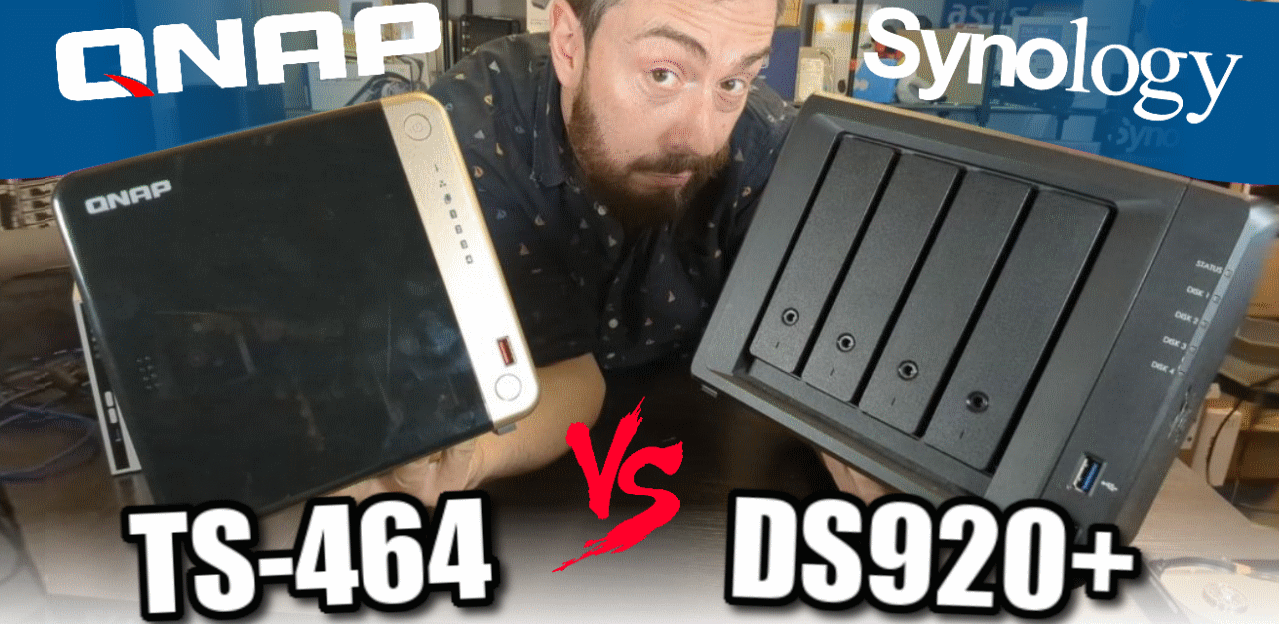
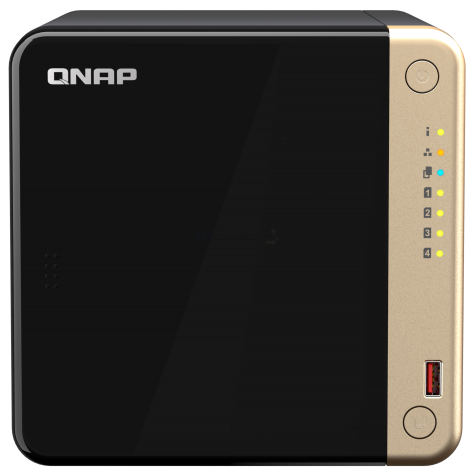
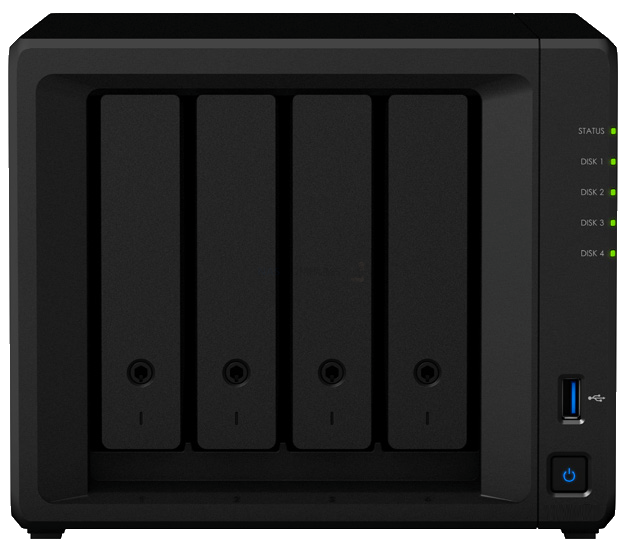

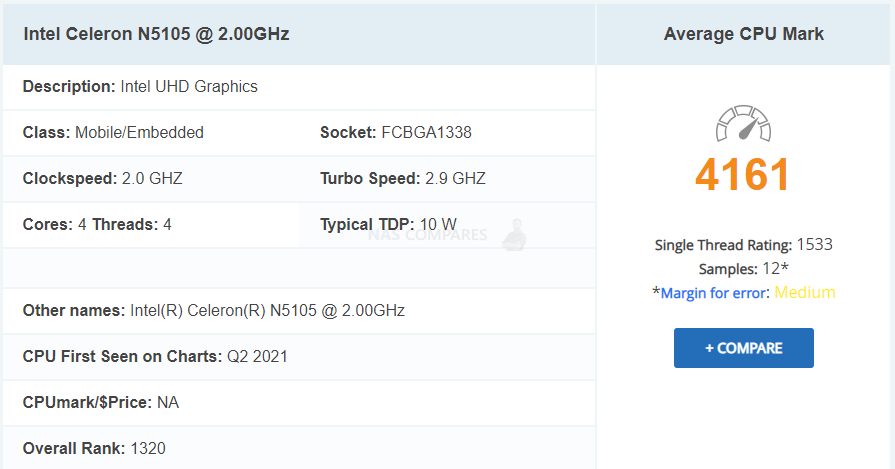
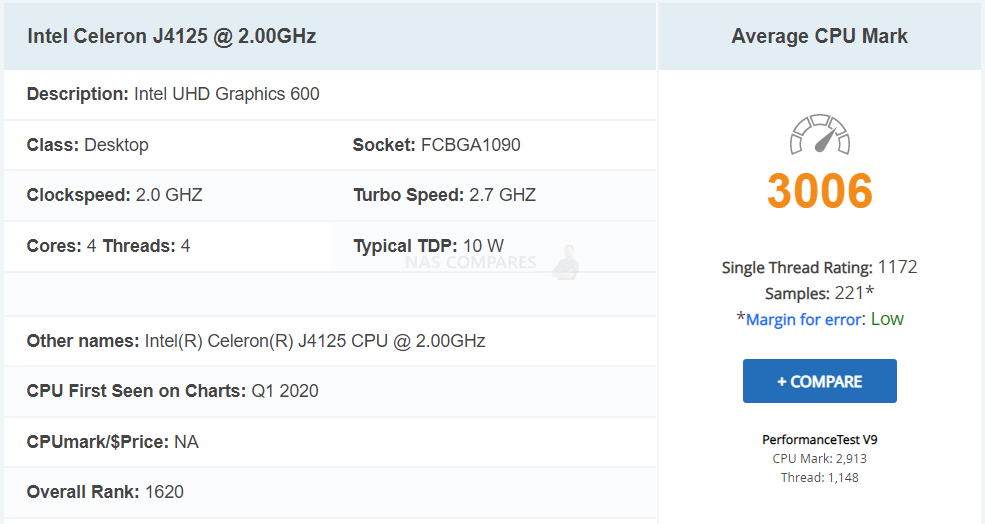
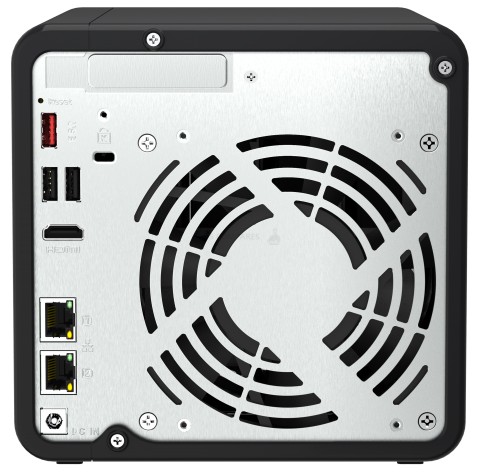
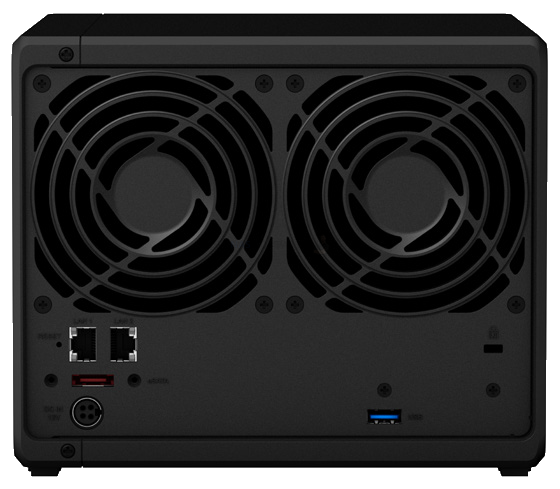




This video could have been better if it didn’t focus so much on your personal preferences. Even though you mentioned several times that it would be up to the user to decide, you constantly propped up Synology and made excuses for it while over-criticizing QNAP’s extensive options. Let the specs and design speak for themselves without so much opinion and bias. This approach would be more effective if the goal is to let the user decide what works best for them.
REPLY ON YOUTUBE
I have the qnap ts-464 and I will be returning it for the synology ds920+ i only use my nas system for plex and the ts-464 cpu struggle big time always at 90% lags alot even with me using 2.5gbe internet speed i tested everything with my first nas system that i still run an had no issues the wd pr2100 and also my brother runs the ds920 and has an way more bigger extensive movie library and has no issues we tested 4k, dolby atmos and dolby vision and the ds920 did not struggle so i gave him the ts-464 let him try it out he had the same issues i had with lagging on plex cpu always running at max
REPLY ON YOUTUBE
Qnap licensing are going to be their killer. They should at least make it free for home use.
REPLY ON YOUTUBE
I don’t see the DS920+ on Synology website any longer, but there is no mention (at least none that I could find on their website) that indicates it’s been discontinued. I see several local retailers indicating that it’s been discontinued 🙁 but nothing on Synology website. Has anyone heard or seen ‘official’ statement from Synology indicating that the 920+ is now a discontinued product?
REPLY ON YOUTUBE
Great review! Learn about your system (for us who like learning) and you won’t be disappointed. Been using my QNAP remotely for years and love it. Closed systems..meh!
REPLY ON YOUTUBE
*Update, Synology DSM has been updated to DSM 7.1. So, check out my MASSIVE Synology DSM 7.1 Software Review HERE – https://youtu.be/SqFa0WyxGJc *
REPLY ON YOUTUBE
i am currently looking for an NAS solution as a backup one. My eye catches the DS90+ at the moment. But because this is an 2 year old system. Is it still good to wait or? what is the new followup of this machine_
i have 140€ discount on ebay so it would be a good choice.
DS920+ in combination with 4 NAS red 1TB harddrives with the discount €435,-
TS-464 in combination with 4 red 1 TB harddrives with the discount €671
what would be a better choice
REPLY ON YOUTUBE
This video tutorial is from 2020, and since then, DSM 7 has been released. Even more polished and refined User Interface on Synology NAS, which makes Synology a big winner, in my opinion.
For all Apple fans, Synology seems like a company that could have been acquired by Apple. Same care on the user experience, to make it simple with more advanced options under the hood, but quite hidden, a slow pace for updating the system.
On the negative side, Synology gets greedier and greedier on hardware and wants to retain more control, hence their difficulties in maintaining a hard drive compatibility list and selling their own hardware.
REPLY ON YOUTUBE
that helps a lot and needed all 30 min on these devices.
REPLY ON YOUTUBE
Watching this after being hit by Deadbolt ransomware on a Qnap day 0 vulnerability.
REPLY ON YOUTUBE
Since Qnap does not support btrfs, how are the drawbacks of ext4 vs btrfs mitigated on the ext4 filessystem? Is there a different method used for snapshots and scrubbing to prevent bitrot? And is this as effective but slower, or how does Qnap handle this?
I would really like to know since I like btrfs on my asustor, and find this a big selling point for synology when buying my upgrade.
Thanks for any answers.
REPLY ON YOUTUBE
It would be great if you can make a video on QNAP settings so users can know how not to mess with the security.
REPLY ON YOUTUBE
I have the DS920+ and have just order The TS-464. The DS920+ it is easy to use and a great device. However I want more speed as I am moving my network to 10g and another segment at 2.5g. The need for more speed is for replication across soon 4 NAS. So The TS-464 will replicate / backup to the slower NAS’s daily.
REPLY ON YOUTUBE
Thanks
REPLY ON YOUTUBE
Wanting something to store video files we record and music we create, basically so we and others can access it from away off the premises, what is my best bet???? No need for plex or mainstream music storage just our own files!!!! Will a mycloud ex 2 ultra be good enough??? Offered a good deal on a 16tb unit
REPLY ON YOUTUBE
This looks great, however its now 2022 and I’m looking to get a Synology DS1821+ With I understand DSM 9.x. Any chance of a newer series (or are the differences still not that great to 7.0)?
REPLY ON YOUTUBE
You mention the qnap TS 464 comes with 6 camera licenses, as the TS-453 does. At least on the Australian site of qnap it states the TS 464 comes with “2 IP camera channels” that are free. That is for QVR elite. additional channels are only on subscription basis. 1.99 per month. Can you confirm this if the 464 only comes with 2 licenses? This would be a major shift important for people preferring Qnap for the more camera licenses.
REPLY ON YOUTUBE
Amazon has the 920+ for 550$
REPLY ON YOUTUBE
Just recently tested two QNAPs 332X with 10gb link each.
Used 2 x 500GB Crucial M2 SATA in one as RAID0 and single Ironwolf 1TB SATA SSD in the other.
RRAS copy of ~50GB test file was done with average 3,5 Gb/s. The problem was overheat of Crucials (even with added custom radiators). They ran at about 70+ degrees where Ironwolf barely hit 40 degrees. Ironwolf had no issues with constant ~400MB write.
So for me Synology mix of NVMe with 1Gb is ridiculous. In some scenarios proper SATA drive matched with 2,5/10Gb LAN (in QNAP i.e.) is faster (and NAS is quieter) than overheating M2/NMVe drive.
REPLY ON YOUTUBE
Team 646 all the way.
REPLY ON YOUTUBE
Hey Robbie, regarding Synology, picky/fussy about the hard drives for in use, Qnap hardware and specs are pretty good, but customer and tech support sucks
REPLY ON YOUTUBE
Damn good video!
REPLY ON YOUTUBE
I’ve only ever used Synology, but truth be known , the GUI always irked me.
Based on what i’ve seen, the upfront approach of Qnap suits my brain much better.
Given the way Qnap hardware stands, i will consider adding Qnap devices going forward
REPLY ON YOUTUBE
I have a (TS-453Be), should i be looking to upgrade this to the (TS-464) or is it to small a change to be worth it?
Thanks
REPLY ON YOUTUBE
Hi, any ideas on one very important thing: DSM 7.1 completely bans using unofficial memory on their NASes. Tested on 220+ and 1821+ – after upgrade they are no longer booting – blue lights. 16GB Kingston and 8GB Crucial – most recommended modules were working fine on 7.01 and older 6 versions. Truenas Scale is the way. Qnap is off due to poor security and Synology for unrealistic price for HDDs/SSDs/memory upgrades.
REPLY ON YOUTUBE
Love your reviews! No, 30 minutes is not too long for me with all the information you give. Thanks for all you do
REPLY ON YOUTUBE
Chose DS920 over QNAP. While QNAP has better hardware conpared to Synology their Security team sucks. Will it change in the future? I doubt .
REPLY ON YOUTUBE
I bought the DS920+, but I just want to use it to set up a home media server and play around with virtual machines. Would you say it’s good enough for those purposes?
REPLY ON YOUTUBE
QUESTION: I have a very old Netgear ReadyNAS with 4 x 2TB HDD’s. If I buy a Synology DS920+ can I use the 4 old HDD’s and upgrade them one at a time with larger drives by hot swapping them as needed? ATM I can pull one drive out and upgrade it when needed and the total contents stay the same.
REPLY ON YOUTUBE
Ds 1520+ vs Ts 464 Which Should You Buy?
REPLY ON YOUTUBE
Ds 1520+ vs Ts 464 Which Should You Buy?
REPLY ON YOUTUBE
Ds 1520+ vs Ts 464 Which Should You Buy?
REPLY ON YOUTUBE
This is an excellent video…thank you ????
REPLY ON YOUTUBE
This is an excellent video…thank you ????
REPLY ON YOUTUBE
This is an excellent video…thank you ????
REPLY ON YOUTUBE
2.5 GB NICs alone put the Synology to shame, in fact, any 2.5 GB NICs NAS these days is better than DS920+, was obsolete when lunched and today is even worst.
REPLY ON YOUTUBE
As is often said on these pages, a NAS is not a backup. Taking that lesson seriously, I own both a DS920+ and a now older TS-453A. They both contain mostly the same data. So, I not only have a backup, but if either was hit by ransom ware, it would ( I hope ) be unlikely to afflict them both at the same time so I have a fallback position that I can rely on. ( I do also have an offsite backup.) I also find that some apps are better on one brand than the other so I can choose which one to use. For example, Cloud sync, Surveillance, etc. If you can find it in your budget, buy both. I’m strictly a home user but I put a very high value on my data; a value that far exceeds the additional cost of that second NAS.
REPLY ON YOUTUBE
Hi, if you had the choice would you go for QNAP TVS-473e-4G or for the QNAP TS-453D-4G? Would you say that the QNAP TVS-473e-4G aged well or is it too old now?
REPLY ON YOUTUBE
Could you talk about the possibility of installing truenas or unraid on the qnap to prevent the security issues?
REPLY ON YOUTUBE
WTF? No seagulls???
REPLY ON YOUTUBE
the debate between Synology and qnap is like fanboys of Apple vs Android. Both are great. The Qnap is a lot more for enthusiasts where one must knows what he is getting into before buying one. People love the user freindly interface of the Syno, but I infact do like the complex interface – give me all – kind of feel of the Qnap.
REPLY ON YOUTUBE
On the QNAP, does the PCI Gen 3 x1 slow the NVME down to 1000MB? Should we be looking for X2 or X3 on the spec? Is the Synology also limited by spec or can you get full speed out of it?
REPLY ON YOUTUBE
Son unos XX18LIKE.Uno de Losl mejores ❤ Mañas no se la. .
REPLY ON YOUTUBE
Is the TS-464 for sale anywhere ? cant even find it on the QNAP site
REPLY ON YOUTUBE
There’s nothing to solve here ???? The TS-464 with QTS 5 and the new Celeron, HDMI etc. is clearly the best ????
REPLY ON YOUTUBE
Synology wipes the floor with qnap
REPLY ON YOUTUBE
I cannot beleive that there is NO WAY to sync any folder and file type from android device to synology nas… that drives me nuts… it’s either super complicated third party app to configure or the only syncing possible is with ds file that does ONLY pictures or synology photo crap app… I just want to sync ANY folder and their files in it (like download, ringtones and so on)… why the hell can’t synology do such thing ??? ds cloud does NOT permit to sync android folder to nas, it only sync the cloud that is on the nas to the android device, I want the other way around, there is no way to sync android ANY type of android files to nas.. urgh…
REPLY ON YOUTUBE
What about stability between the two?
REPLY ON YOUTUBE
My synology is messing up my local network and I can’t figure out why. Internet drops for a few seconds every few min on all connected network devices. If I disconnect the NAS from the network, it seems to work just fine.
REPLY ON YOUTUBE
Login Speed – seemed easier with entering user name and password on the same dialogue to only hit enter once, especially when credentials are stored in the browser. Perhaps they changed it for increased security, prefer the old way.
REPLY ON YOUTUBE
Thanks for all your great videos – I am looking to upgrade my NAS and have settled on a Qnap TS-673A it will be my “home” NAS should I use QTS Hero ZFS or QTS 5 as my OP? Which is best? One of the main things I want to use is MyCloudLink (which I presume I can use on both OP)
REPLY ON YOUTUBE
As a new user you really make what was looking like a dive into the matrix, into something that I can actually folow. Thank you
REPLY ON YOUTUBE
Dose qnap have some sort of hybrid raid ? That back up and save space.
REPLY ON YOUTUBE
8:40 – I wish we could find the person responsible for using a Funnel for the filter icon and make them walk the plank. Funnels are not filters.
But its too late now. The damage is done. People associate the funnel image with the filter action in software just like they associate the piece of paper with a folded corner for “new file”.
REPLY ON YOUTUBE
Latest QTS 5 firmware update lost every user’s “home” folder when connecting via AFP in a finder window, only shared folders are shown. Even disabling and enabling home folders in users don’t take any effect. Only In browser UI the home folder is working properly.
REPLY ON YOUTUBE
I have TS253be and update to QTS 5.0 but NAS force me to initialize NAS (Reset NAS set up)
My raid was gone (Raid 1) while I Initialized NAS to start 5.0 and I try to back up my data to external hdd
but my 2nd disk was gone while back up I can recovery data 70% (Lost forever 30%) T.T
Do you have problem to upgrade like me?
REPLY ON YOUTUBE
Do you have an ETA for full release QuTS Hero 5.0?
REPLY ON YOUTUBE
I had to roll back.
5.0.0. gave me two weird issues.
1. The fans went to 100% and stuck there, regardless of any setting or actual system temp.
2. (And this one is really weird) IR remote button pushes would be registered twice, but only around 25-33% of the time.
I rolled back AND forward three times to check and double check these issues. I’m staying with 4.5.x until I know 5.x.x has the bugs ironed out.
REPLY ON YOUTUBE
i have found the file permission are better but….. in my case the everyone group has no rights assigned to it when checking on qnap.not denied not ro or rw. when you create a user via qnap and assign rights via windows. somewhere along the line everyone has now changed to denied access…..simply just remove anyone from the resource…but not the right way?
REPLY ON YOUTUBE
FULL Written Review of QNAP QTS 5 – https://nascompares.com/2021/10/08/qnap-qts-5-0-nas-software-review-worth-your-data/
01:50 – Disclaimers & Review Considerations
05:25 – Start – QTS Change of Focus
07:00 – QTS 5 vs QTS 4.5 GUI, Design, The Good, the Bad & the Awkward
10:13 – Responsiveness
10:44 – Things That Have Not Changed
11:30 – Security, Notifications & Control
14:25 – Control Panel
15:39 – Storage Manager
17:25 – Remote Mounting & Cloud Gateways
18:40 – File Management
20:30 – Multimedia Control & Sharing
27:00 – Storage Continued – Health & Checks
29:00 – Synchronization & Backup Tools
36:35 – Virtual Machines, Containers & Ubuntu VMs
41:05 – VMware, Hyper-V and SaaS Backups
43:14 – HDMI Services & HD Station
45:00 – Surveillance Tools & Services
49:00 – Licenses, Good & Bad
51:00 – QSirch, QFile, Teamviewer, Hybrid Mount and the Conclusion
REPLY ON YOUTUBE
Add chapters to this video
REPLY ON YOUTUBE
I have a TVS 873e when i seach for the upgrade to QTS 5 on the QNAP site it is not showing it for me. the highest firmware is 4,5,4 1800 am i not able to run V5?
REPLY ON YOUTUBE
Why the full release of QTS 5.0 is not arrived yet on TS-X53D series ?
REPLY ON YOUTUBE
awesome, perfect video as always; you’re the best source for nas – especially on qnap, i would say. Possessor of the – NOWADAYS pretty old – ts231+P and i still use it as my daily driver; with the new qts 5 now, seems even more faster
REPLY ON YOUTUBE
That robot reminds me of the old MS office “clippy”… Luckily he doesn’t ask “it appears you are trying to…” ????
REPLY ON YOUTUBE
That robot in the corner…. Reminds me of clippy… kill it with fire!
REPLY ON YOUTUBE
How did you get this installed on a TVS-872X? I am trying to get it on my TVS-872XT and this model is not officially supported on this initial 5.0 release.
REPLY ON YOUTUBE
First! Always love the content!
REPLY ON YOUTUBE
The missing “For you” from moments sorely missed – it was a great AI system for finding potential duplicate (or near duplicate) photos that just doesn’t work as well as the storage manager reports that only really find exact duplicate pictures.
REPLY ON YOUTUBE
Synology should have a God Mode like Windows too. ;>>>
REPLY ON YOUTUBE
1.Log center cant be modified or set to exclude users or certain things you dont want logged.
2.It is not compatible with DScloud anymore so you cant sync to mobile like you can do on DSM6 with the DSCloud app from Synology but you can use the Synology Package Center to download Resilio Sync or Good Sync but you have to pay a monthly/yearly fee for every user.
Unlike Qnap when you buy your hardware, you arent forced to pay for syncing from and to your own hardware.
With that said there is still a solution using Webdav to-way Nas-pc with Raidrive but you have to pay for software for Pro features.
Mobile sync: Use Foldersync to-way Mobile-Nas, but you have to pay for software for Pro features.
So far as i am aware of limitations using Synology DSM7 when it comes to syncing —> If you want Pro features or you want to use your Nas without reaching out to third-part software without paying extra fees it is recommended to switch to other Nas brands for me i feel Qnap has been working using 30 users for Laptop/Pc/Mac/Android/Iphone all Apps/Software working perfect Pro features without paying extra fee´s or forced to use third-part tools total control for Log center, File-Folder, Photo, Video, Virtualization, Web-sites and so much more.
Other annoying difference i had with Synology i had was this—> i had to make a ticket to find out i cant use Synology Mobile App DS Cloud or that one cant choose what Synology Package-Log Center loggs, it wont let you choose to include, exclude or to delete certain logg if you press Clear button on the loggs that are in “Files downloaded” it deletes all, if you clear “user logins” it deletes all that and you cant revert the deletion.
REPLY ON YOUTUBE
Totally agree with your view on Photo Station. I’m glad you covered this as your feedback might get recognised. I don’t want to upgrade until Photos is comparable to what Photo Station had/has to offer.
REPLY ON YOUTUBE
almost perfection?
Audio Station is totally broken, playback is being cut off,
Media indexing fails to scan more than 50% files,
translations in DSM are not complete, some even have nonsense,
I have no idea what Synology have been doing all the time releasing such buggy software
REPLY ON YOUTUBE
918+ here with upgraded 16gb ram. Am I going to have issue if I upgrade to 7?
REPLY ON YOUTUBE
How do I change dsm7 login page to have username and password on same page?
REPLY ON YOUTUBE
Useful but a bit of a ramble with Robby. My time notes:
https://youtu.be/xZrjPF4nmRc?t=674
11:14 User Interface
12:00 Help Center
12:35 Control Panel
14:03 Security
15:27 Collaboration Suite
15:45 Synology Drive
17:18 Multimedia Apps
18:47 Plex and 3rd party app issues
19:47 DSM 7 background package integration improvements
20:25 HyperBackup, USB copy
21:24 Cloud Synchronization
22:27 Business Applications
23:30 Storage Manager
25:15 Fast Raid Repair
26:35 RAID 6 speedup
27:19 Bench testing, storage performance, UI improvements
29:00 Surveillance Station
30:04 Virtual Machine Manager
32:40 USB changes on DSM7
34:08 Security and UI
34:40 Resource Monitor and UI
35:00 Storage Analyzer
36:55 Recommendations
REPLY ON YOUTUBE
I’ve installed it as a VM on my DS1821+ and I’m completely disappointed with the new photos app. Maybe I’m old fashioned idk but the way timeline view is implemented it doesn’t allow you to look at a timeline on an album level anymore like you could do in photostation. You have to choose between album view or timeline view. I like to look at my photos different ways and this makes the app kind of unusable for me. Additionally I would like them to shows tags on the timeline view when you’re inside an album that has multiple albums underneath it but no photos in it directly. I’ve reached out to them but very little hope of it getting done in my opinion. I’m not upgrading until photos is useable as photostation is no longer supported on dsm7. Additionally I had a lot of indexing / conversion issues on my VM with my photos directory. Not sure if that’s just a VM issue or not
REPLY ON YOUTUBE
you talk way too much unnecessarily !!
REPLY ON YOUTUBE
The audio is of sync with the video
REPLY ON YOUTUBE
Since when Synology uses china domains ? Isn’t it Taiwanese company ?
REPLY ON YOUTUBE
How to downgrade back to 6.2?
REPLY ON YOUTUBE
Hi. Is it safe and or good for my Synology 920+ to be shut down during the night and sometimes for 30 days at a time while away? Many thanks for your great videos.
REPLY ON YOUTUBE
I upgraded both my DS 218J and my brand new DS920+ to DSM 7.0 and liking it a lot! No real problems. Moments with my Photos lost its tags during the transition to Synology Photos. I have to redo them but that’s ok. Everything else is great. I agree with this review.
REPLY ON YOUTUBE
so is there any reason for me to wait for the DSM update to come through automatically on my DS1520+ or should I just manually update now? Is it likely that more changes will be made to it before the automatic update comes through?
REPLY ON YOUTUBE
Boomer taskbar, jam packed .. just needs a few AoL or Geocities taskbars floating on the desktop to finish the effect.
REPLY ON YOUTUBE
No Java= no jdownloader????????
REPLY ON YOUTUBE
Does DSM 7 introduce any issues with access via the NFS protocol? I use my DS420j strictly as a file server in a Linux environment and do not really care about photo station, music station, etc. Quick, reliable access via NFS is my main concern. Thank you for your fine videos.
REPLY ON YOUTUBE
Photos all seemed to work once I requested a re-indexing. However, photo sharing is completely broken. Even if you request that anyone can view with a URL, Synology NAS still requests a username and password. Sigh…………………
REPLY ON YOUTUBE
I notice the absence of Amazon S3 on the cloud service for HyperBackup… Is it still possible to backup to Amazon S3 Glacier storage in DSM7? Or they removed it not to compete with their own C2 solution?
REPLY ON YOUTUBE
Thanks for your valuable videos. I missed the loss of DS Cloud, so syncing became a problem. I started using Syncthing after upgrading to DSM7. I also have a problem with Synology Drive from my laptop on a company network, while using Express VPN. It keeps trying to connect to the server. When I switch off the VPN it works fine. Maybe I will switch to Syncthing on this Windows machine as well. For me this is a key function for a NAS so I didn’t expect it to work less good. But all and all it’s a big improvement.
REPLY ON YOUTUBE
For anyone has done the upgrade, how long did it take please ?
REPLY ON YOUTUBE
Great video, thank you!
REPLY ON YOUTUBE
No mention of the issues with third party packages that worked fine in 6.2.4 but no longer work in DSM 7, it might be almost perfect IF you only use Synology apps.
REPLY ON YOUTUBE
Not upgrading until they add support for android folder backup/syncing!
REPLY ON YOUTUBE
Hello, I am sure that it will surely be for reasons of not extending the video too much, but your way of showing and explaining the news and characteristics of this new DSN are not very clear, at least for me you are going too fast and a bit messy. I’m not saying it in a bad way but I think you could do it in a more calm and neat way. Thank you very much anyway.
REPLY ON YOUTUBE
DSM 7, adding support for Google Shared drives via Cloudsync is a Big + for me
REPLY ON YOUTUBE
I use a KDLinks media stream box to watch movies and videos I store on my Synology NAS DS918+. Does DSM 7.0 support the ability for the stream box to sign into the NAS and stream the files?
REPLY ON YOUTUBE
i don’t like in the Download station the “downloading” word is blue and no longer green
REPLY ON YOUTUBE
This man is clicking faster than his shadow ????
REPLY ON YOUTUBE
20:53 I ran into the exact issue you have 2 days ago on DSM6.2.4. I opened a support ticket that is still open, however I suspect it’s a browser based issue. Try opening in a different browser and see if you can view all of the back up options in that. It’s a Munster to me how this happened as I even cleared my browser cache and it persisted in Firefox. When I opened in safari it was “fixed}
REPLY ON YOUTUBE
Who knew FooOOZ is the correct pronunciation of FooToes. Just kidding ????
REPLY ON YOUTUBE
Great video – in general the audio is a bid low on your videos, would it be possible to turn it up a notch? Thanks 🙂
REPLY ON YOUTUBE
Show idea, upgrading synology hardware. Example, use a ds213 case and change the motherboard to a newer model including modifying the case for USB ports if needed.
REPLY ON YOUTUBE
Your shows are good, however, can you please make them shorter/succinct. Perhaps add text boxes on the screen so we can see that as you move on. Again, you do a fantastic job ???? thanks for your hard work.
REPLY ON YOUTUBE
Photos was over-promised, and under-delivered…. Mostly hype
REPLY ON YOUTUBE
One thing I’d love is for larger NAS to support mounting volume from older smaller NAS.
For instance, I had an old DS411j that failed on me, one of the drive failed but the NAS was full, so now I can’t even start it up. I just wish I could buy some of the 12 slots new NAS and then mount my 4 old drive into the new system and then just transfer data and format the old drives to add them to the new volume. I asked Synology if we can do that, their answer: nope, unless you build a Linux computer and mount drives on Linux and transfer your data. If I need to build a Linux computer, I’d better off just to use FreeNAS and never have to deal with Synology DSM…
REPLY ON YOUTUBE
Microsoft Edge is base on Chromium, so any issues you have with Chrome will most likely happen in Edge as well. You need to test on browses like Firefox that are not base on Chromium.
I use Firefox and only have one M.2 slot filled and the 4 HDDs bays are full. Testing what I could zooming out made the empty M.2 disappear. It did not make the icon show under the other one as shown by you..
REPLY ON YOUTUBE
What’s the later on PLEX… yesterday I was advice to use Docker as PLEX is not installing correctly?
REPLY ON YOUTUBE
still no on-demand sync for Synology Drive w/ Mac OS in DSM7. Synology really dropped the ball for Mac support. DSM7 not worth the hassle.
REPLY ON YOUTUBE
Is it possible how do a clean install Synology dsm 7 on my new Synology ds1520Plus?
REPLY ON YOUTUBE
I would have liked more analytics inside VPN Server eg bandwidth consumption from each user (up/down) ????????♂️
REPLY ON YOUTUBE
i have a test DS119j and upgraded it to DSM 7 and it’s very slow. Tested 4gb of photo’s and the database is going on for days.
Going to upgrade my DS1821+ now. Hope 10GB will still work.
REPLY ON YOUTUBE
For the past week, Universal Search has been HOARDING CPU and RAM!
Indexing just goes on and on and on, non stop!
I can’t find a workaround!
Disabling Universal Search in DSM 7, disables Synology Drive and Synology Office
Instructions for this problem, found on forums, are all for DSM 6 and DON’T work on DSM 7
This is pathetic!
REPLY ON YOUTUBE
For me it doesn’t matter as much if the new apps arent quite as good as the old ones yet as long as they have been written on a newer platform that easier to add missing and new features later rather than an app that was based on ds 4. Apple’s old website went down before a launch not to increase excitement but because it was old and rubbish and had to be .
REPLY ON YOUTUBE
2fa should be incorporated Into DS finder having said that authy is miles better as you can transfer it to other devices
REPLY ON YOUTUBE
Did you do a manual update or did DSM 7.0 show as an update automatically? It has not shown up on my RS1221+ or DS216+II in Canada yet…
REPLY ON YOUTUBE
Still I have hibernation issue and I opened a ticket with Synology support. After analyzing the debug logs, they came back with SMB and VMM are the cause of periodic waking up of HDD’s. But still I couldn’t find an answer from support that why this periodic waking up which exactly happens each hour related to VMM and SMB, assuming no laptops connected to NAS in the test period and no VM was running. Will update in case support answers me.
REPLY ON YOUTUBE